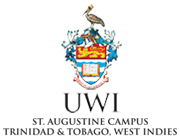About
Mission
To collect, preserve, research and document the flora of Trinidad and Tobago and to provide floristic information about it upon request.
Objectives
The objectives of the National Herbarium are to:
- maintain and expand the permanent museum collection of the flora of Trinidad and Tobago.
- provide an accurate plant identification service.
- actively promote interest in and disseminate information about the local flora.
- develop its capabilities as a resource centre for botanical information.
- provide facilities for local, regional and international researchers.
- pursue joint projects with such researchers as to further these objectives.
Historical Background
The Beginning
Trinidad and Tobago has a long history of plant collecting dating from the sixteenth century which accelerated with the establishment of the Royal Botanic Gardens in Port of Spain in 1818.
Although the Superintendents of the gardens were enthusiastic botanists, it was not until the arrival of the fifth superintendent, John H. Hart, in March 1887 that the herbarium was formally set up when he found the collections of his predecessors, “tied up in brown paper parcels, put into out-houses, bed-rooms, closets, with no arrangement, or catalogue to guide anyone as to their contents. As a result 90% of the specimens were destroyed by insects."
Hart's priority was then to preserve, poison, mount and catalogue these specimens and to have them stored in specially designed cabinets where they were arranged systematically. In this he was ably assisted by the Herbarium Assistant, Paulinea McLean, whose devotion to her task for 32 years (1889 - 1921) was largely responsible for the preservation of the collection during that time. The number of specimens was increased under her tenure from about 3000 to 7000.
Removal to a New Home
At that time the Herbarium was housed at the offices of the Department of Agriculture in St. Clair near the Savannah in Port of Spain. There it provided a source of botanical information for the nearby Royal Botanic Garden and later the Department of Agriculture, the Forestry Department and, eventually, the Imperial College of Tropical Agriculture (I.C.T.A.) and the University of the West Indies.
After the establishment of the I.C.T.A. at St. Augustine, the Professor of Botany, E.E. Cheesman, together with W.G. Freeman and R.O. Williams of the Department of Agriculture began to work on the publication of the Flora for Trinidad and Tobago based on these collections. The necessary research and further collections were undertaken by these men outside their normal teaching and administrative activities. The first volume of the Flora of Trinidad and Tobago was published in 1928.
In keeping with the expansion of botanical research at the I.C.T.A. after World War 2, the Herbarium was transferred from St. Clair to St. Augustine in July 1947. The collections were first housed in the Plant Pathology Department. When the Sir Frank Stockdale building Building was added to the College, provisions were made to accommodate the Herbarium, which moved into residence in September 1950. The Herbarium has been operating from this building up to the present.
The Modern Era
In 1960 when the I.C.T.A. became the Faculty of Agriculture of the then University College of the West Indies, the Department of Botany and Plant Pathology was charged with the management and financing of the Herbarium. Under the leadership of the Professor of Botany, J.W. Purseglove (1957 - 1967), ably abetted by members of his staff such as N.W. Simmonds, specific staff were assigned to the Herbarium to collect specimens and maintain the collection. Further volumes of the Flora were produced by local staff and overseas botanists.
In time the cost of running the Herbarium, with no specific budget, became too great for the Department to bear. The then Head of Department, F.W. Cope, initiated a financial take-over of the Herbarium by the Government, and eventually, through the National Scientific Advisory Council, and its Chairman, K. Julien, the Ministry of Planning and Development agreed to finance the Herbarium indefinitely, regarding it as a ‘national asset’, and the collection was renamed the "National Herbarium of Trinidad and Tobago" in1972.
The National Herbarium of Trinidad and Tobago is funded directly by the Government of Trinidad and Tobago through a subvention to The University of the West Indies with links to the Department of Life Sciences and managed by a Curator, a post established and filled for the first (and so far only) time in 1980 by Yasmin S. Comeau (nee Baksh).
Current Accommodation
The Herbarium occupies seven rooms in the Sir Frank Stockdale Building. There is the main room 200 (Herbarium) where the plant collections are housed in a well-maintained, temperature-controlled environment. The herbarium library occupies its own space in room 46. There is a preparation room (Room 39) where specimens are processed, treated and mounted, or frozen periodically at sub-zero temperatures for insect control. The Administrative offices are occupied by the Curator (Room 38) and the Senior Secretary (Room 48). Room 50 serves a dual purpose as a sick bay and a secondary laboratory. The seventh, Room 47, is the drying and storage room.






